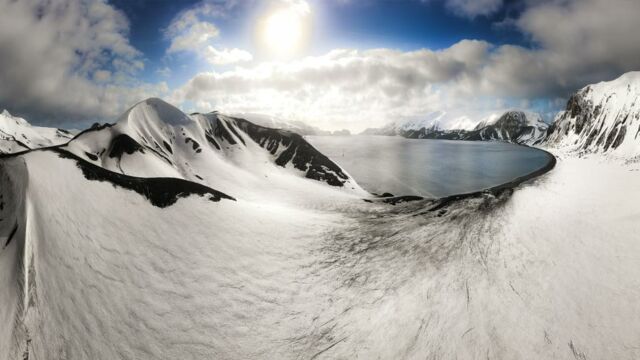The biggest eruption that the Antarctic has ever seen during the Holocene period could have taken place almost 4,000 years ago. It is said to have been as powerful as Tambora, an Indonesian volcano that caused one of the most violent eruptions in the world in 1815. This event in the Antarctic could have been so powerful that it could have created the surprising Deception Island. This caldera, which is still active today, is thought to have witnessed 20 eruptions over the last two centuries.
Discover our latest podcast
A massive eruption
Whilst a study in 2016 placed the eruption 8,300 years ago, new analysis suggests that it could have happened around 3,980 years ago instead. The discharge of the magma chamber could have caused a sudden drop in pressure, causing the upper part of the volcano to collapse. Forming a depression with an 8 to 10-meter diameter, it could also have created Deception Island and its strange enclosed horseshoe shape.
The eruption is said to have created an earthquake so powerful that its tremors were recorded in the sediments accumulated on the bottom of lakes on Livingstone Island. Furthermore, between 2012 and 2014, the HOLOANTAR project set about collecting samples of these lacustrine sediment cores in order to study the climatic variations of the region over the last 11,700 years. Researchers couldn’t even imagine the surprise that was in store for them.
Surprises in sediments
Co-author Sergi Pla commented:
The presence of a different sediment layer in all lakes and of the same age after a thick layer of tephra surprised us. Later geochemical and biological analysis indicated that these sediments had terrestrial origin and were deposited abruptly in the lake’s bottom. These results suggested the occurrence of a major earthquake that affected all this area.
These samples revealed an accumulation of a layer of ash from the eruption, followed by nearly a meter of other materials that had been moved from the shores to the bottom of the lakes by the power of the quake. As Adelina Geyer, co-author of the study published in Scientific Reports concluded:
It is very important to be able to date this type of eruption that allow us to understand the climatic changes caused by volcanic eruptions, in this particular case, at high austral latitudes.















